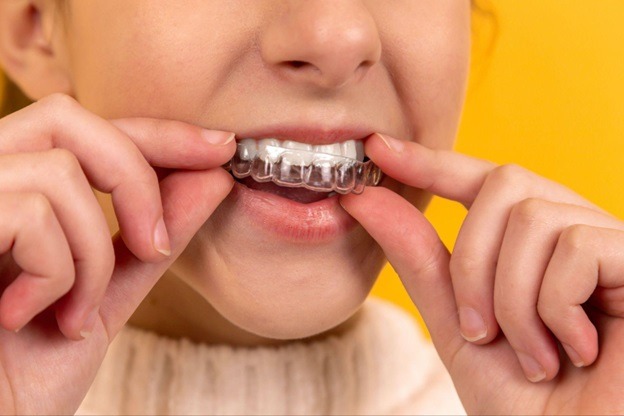In recent years, Invisalign has gained popularity as a discreet and convenient orthodontic treatment option, revolutionizing the way people achieve a straighter smile. This innovative approach requires patients to sign an Invisalign consent form, ensuring they understand the treatment process and their responsibilities. This article will provide a comprehensive understanding of Invisalign, delving into its unique features, benefits, and suitability for various dental cases.
What is Invisalign?
Invisalign is a modern orthodontic treatment that straightens teeth using a series of custom-made, removable clear aligners. As opposed to the traditional braces, which use metal brackets and wires, Invisalign aligners are virtually invisible and can be easily taken out for eating, brushing, and flossing. The main components of the Invisalign system are the thermoplastic, BPA-free clear aligners that are designed to gradually shift teeth into their desired positions.
Benefits of Invisalign
Invisalign offers several key benefits over traditional braces:
- Aesthetics: The clear aligners are nearly invisible, making them a more discreet option for those who may be self-conscious about wearing braces.
- Comfort: With no metal brackets or wires, Invisalign aligners are generally more comfortable to wear and cause less irritation to the cheeks and gums.
- Convenience: One can remove the aligners for eating, flossing or brushing, making it easier to maintain good oral hygiene during treatment.
- Customization: Invisalign treatment plans are tailored to each individual, ensuring a precise fit and efficient tooth movement.
- Fewer office visits: Invisalign typically requires fewer orthodontic appointments compared to traditional braces, allowing for greater flexibility in scheduling.
Invisalign is suitable for a wide range of dental cases, including overcrowding, gaps, overbites, underbites, and crossbites. However, it may not be the best option for more complex orthodontic issues, which may require traditional braces or other specialized treatments. A consultation with an orthodontist specialist can help determine whether Invisalign is a good fit for your specific needs.
The Invisalign Process
The Invisalign treatment process involves several key steps, from the first consultation to the completion of the treatment:
- Consultation: The first step is a consultation with an orthodontist or a dentist experienced in Invisalign treatment. They will assess your dental needs and determine if Invisalign fits your needs.
- Treatment planning: If you are a suitable candidate, your orthodontist will use 3D imaging technology to create a digital model of your teeth. This allows them to develop a precise treatment plan, including the projected movement of your teeth and the estimated treatment duration.
- Aligner fabrication: Based on your treatment plan, custom-made aligners will be created to fit your teeth. You will receive a series of aligners, each designed to make small adjustments to your teeth’s position.
- Aligner wear: You will wear each set of aligners for approximately 1-2 weeks, removing them only for eating, brushing, and flossing. It is essential to wear the aligners for 20-22 hours per day to achieve the desired results.
- Checkups and adjustments: Regular checkups with your orthodontist, usually every 6-8 weeks, are necessary to monitor your progress and make any necessary adjustments. You will also receive new sets of aligners during these appointments.
- Completion: Once the treatment is complete, you may have to wear a retainer permanently to maintain your new smile and prevent your teeth from shifting back to their original positions.
Costs and Insurance
The price of Invisalign treatment varies depending on the complexity of your dental case and geographical location. Generally, it ranges from $3,000 to $8,000, making it slightly more expensive than traditional braces. There are dental insurance plans that cover a portion of the cost, while others may not provide coverage for Invisalign. Check with your insurance provider to understand your specific coverage.
Many orthodontists and dental practices offer flexible financing options to help make Invisalign treatment more affordable, such as monthly payment plans or third-party financing companies. Be sure to discuss these options with your dental provider during your consultation to find the best solution for your budget.
Frequently Asked Questions
- Treatment Duration: Invisalign treatment typically lasts 12-18 months, but individual cases may vary depending on the complexity and patient compliance with wearing the aligners.
- Maintenance: To maintain your aligners, clean them daily using a soft toothbrush and lukewarm water. Avoid using toothpaste, as it can be abrasive and cause discoloration.
- Potential Side Effects: While Invisalign is generally more comfortable than traditional braces, some patients may experience temporary discomfort or soreness when starting a new set of aligners. This is normal and should subside as your teeth adjust to the new position. If pain persists, consult your orthodontist.


